Last updated on
Discover the most efficient techniques to swiftly dry your couch, ensuring a comfortable and moisture-free seating experience in no time.
Have you ever spilled a drink on your couch and felt like it was the end of the world? Or maybe your furry friend decided to take a nap on your sofa after playing in the rain? Whatever the reason, wet couches can be a real headache to deal with. Not only do they look unsightly, but they can also develop unpleasant odors and even mold if left damp for too long.
But fear not! In this article, we’ll show you how to dry a couch fast and get it back to its former glory in no time. So grab some towels and let’s get started!
Table of Contents
Assess the Wetness
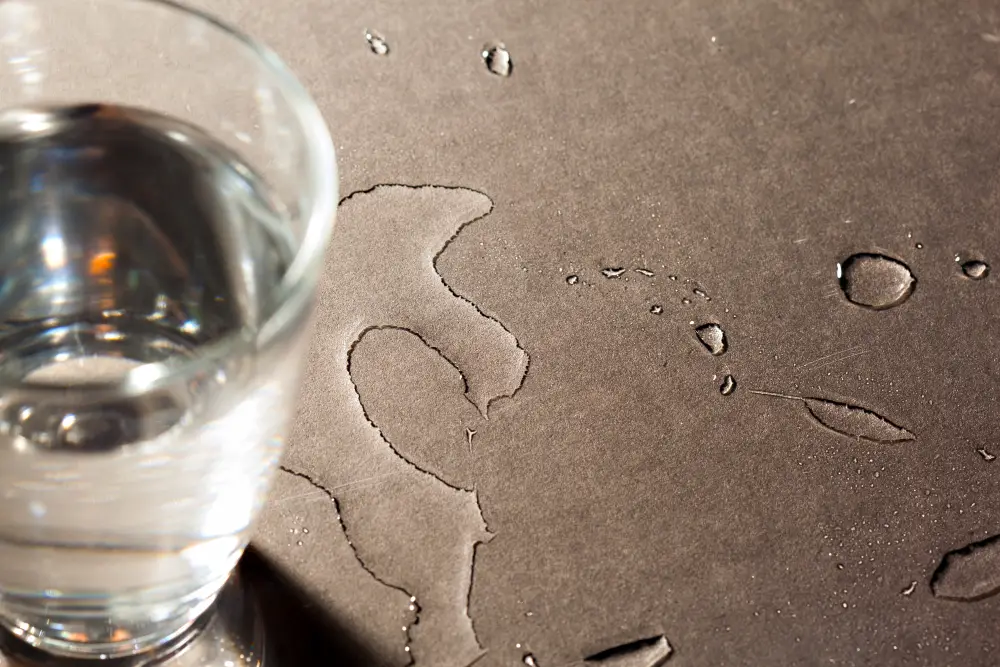
The first step in drying a wet couch is to assess the level of moisture. The amount of water that has soaked into your sofa will determine the best course of action for drying it out.
If you spilled a small amount of liquid, such as a glass of water, then your couch may only be slightly damp and require minimal effort to dry it out. However, if you have experienced flooding or heavy rain that has caused significant damage to your furniture, then more extensive measures will need to be taken.
To assess the wetness level accurately, start by feeling around on different parts and areas on the couch with clean hands or gloves if necessary. Check for any visible signs like puddles or drips from cushions onto floors/carpeting underneath them.
If there are no visible signs but still feels damp when touched lightly with fingertips – this indicates some degree (or even high) levels moisture content present within its fibers which can lead over time not only unpleasant odors but also mold growth.
Assessing the Damage

Depending on the extent of the water damage, you may need to take different measures to dry your sofa effectively. If it’s just a small spill or stain, then you can probably handle it with some towels and cleaning solution.
However, if there’s been significant flooding or prolonged exposure to moisture, then your couch may require more intensive care.
To determine how much work needs to be done on your wet couch, start by examining its fabric type and construction material. Leather sofas will require different treatment than those made from synthetic materials like polyester or nylon.
Next up is assessing how long ago the spill occurred; this will give an idea of how deeply ingrained any stains might be and whether mold has started growing yet.
Vacuum Excess Water
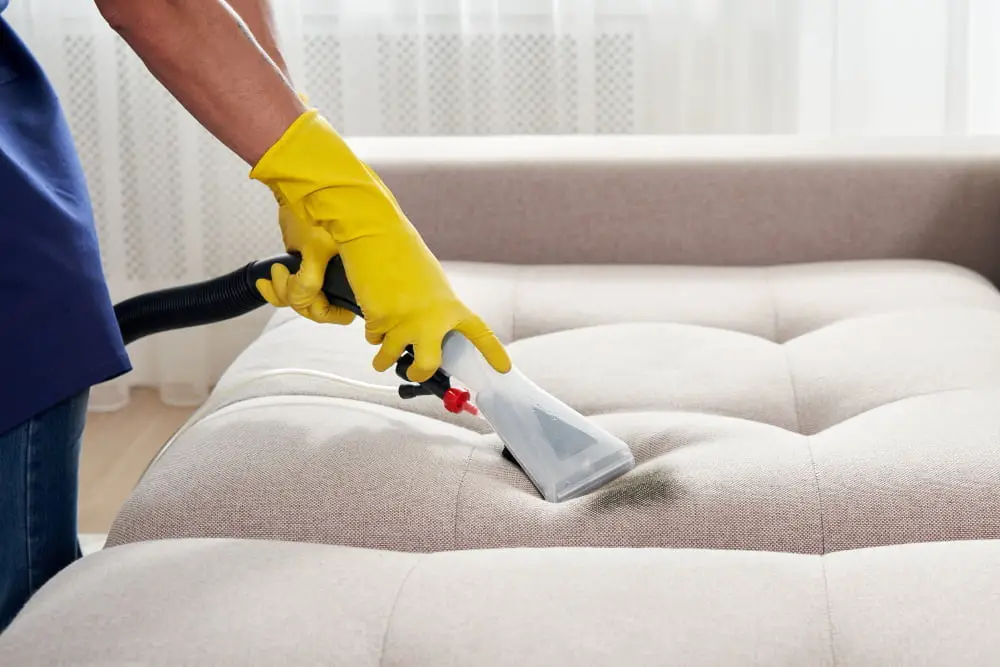
If your couch has been soaked through, it’s important to remove as much excess water as possible before proceeding with any other techniques. One effective way to do this is by using a vacuum cleaner with an upholstery attachment.
Start by removing all cushions and pillows from the sofa and placing them on a clean, dry surface. Then use the vacuum cleaner to suck up any standing water or dampness from both sides of each cushion and every crevice of your sofa.
Be sure not to press too hard on the fabric while you’re doing this, as that could push more moisture into it instead of drawing it out. Instead, gently run over each area until you’ve removed all visible signs of wetness.
Once you’ve finished vacuuming up excess water from your couch cushions and frame, move onto other drying techniques such as using absorbent towels or sponges for further cleaning efforts.
Absorbent Towels and Sponges
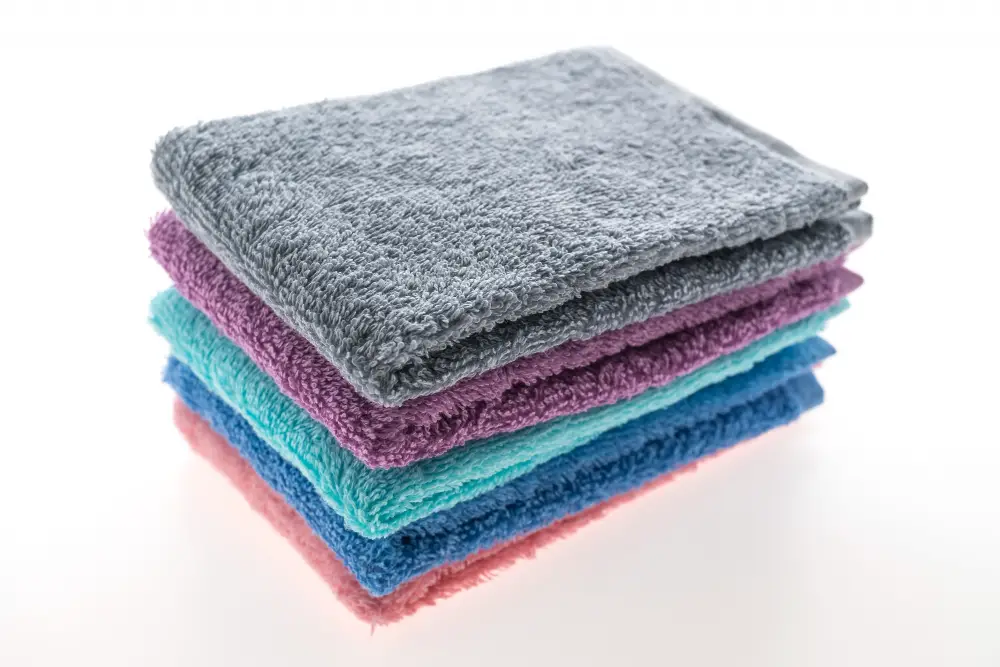
One of the most effective ways to do this is by using absorbent towels and sponges. These materials are great at soaking up excess water from your couch, preventing further damage.
Start by blotting the affected areas with a dry towel or sponge. Avoid rubbing or scrubbing as this can push moisture deeper into the fabric fibers, making it harder to remove later on.
Instead, gently press down on each spot until no more water comes out.
If you’re dealing with a large spill or an entirely soaked cushion cover, consider using multiple towels in layers for maximum absorption power. Once one layer becomes saturated with water, replace it with another dry towel until all moisture has been removed.
Drying Techniques

There are several techniques that can be used depending on the severity of the situation. One effective method is to use a wet/dry vacuum cleaner to suck up any excess water from the surface of your couch.
Another technique is using absorbent towels or sponges to soak up as much moisture as possible. Press down firmly on cushions and other areas where water has accumulated until no more liquid comes out.
If you’re dealing with a particularly stubborn damp spot, try sprinkling baking soda over it before vacuuming or blotting dry with towels. Baking soda helps absorb moisture while also neutralizing odors.
Remember not to rub too hard when drying your couch, especially if it’s made from delicate fabrics like silk or velvet – this could cause permanent damage! Instead, gently pat dry until all visible signs of moisture have disappeared.
Drying Couch Cushions
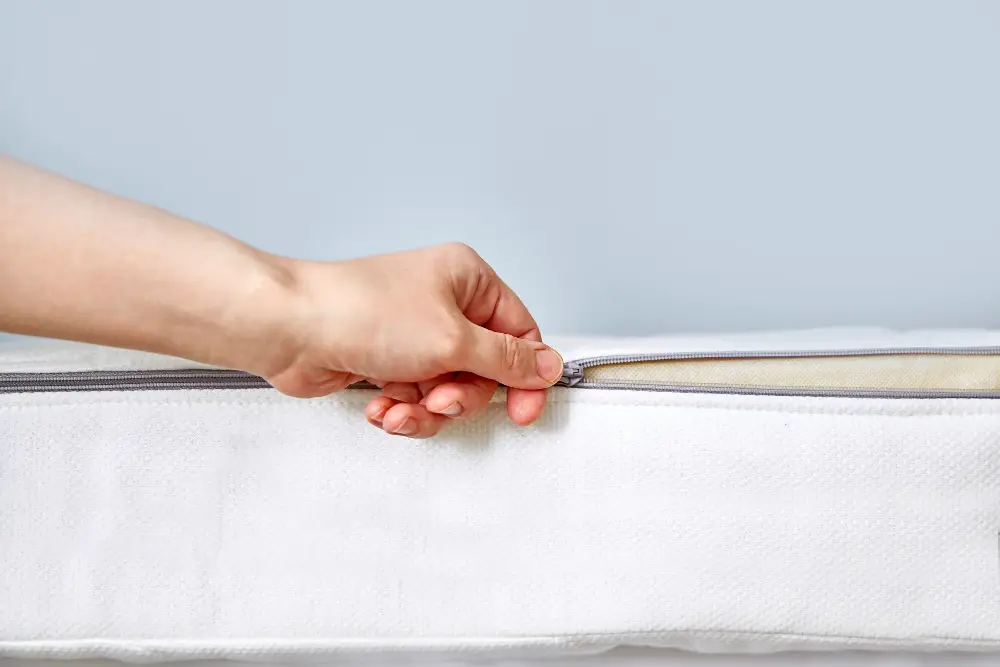
If they are only slightly damp, you can use absorbent towels or sponges to soak up the excess water. However, if they are heavily soaked, it’s best to remove them from the couch and dry them separately.
To dry your couch cushions effectively:
- Remove all covers and cushion fillings.
- Place each cushion on a clean towel or sheet.
- Roll up each towel with its corresponding cushion inside.
- Press down gently on each roll to extract as much moisture as possible.
After this initial step, lay out fresh towels in a well-ventilated area where there is plenty of air circulation but not direct sunlight exposure (as this may cause discoloration). Lay out your cushions flat onto these new towels and leave for several hours until completely dry.
If time allows it’s recommended that you flip over the cushions every hour or so during drying time for even distribution of airflow across both sides of the fabric surface.
Drying Cushion Covers

Once you’ve washed the cushion covers, it’s time to dry them. The best way to do this is by laying the damp cushion covers flat on a clean surface like a table or countertop.
Make sure they are not bunched up or folded as this can cause wrinkles and prolong drying time.
Use absorbent towels to blot any excess water from the fabric before leaving it out in open air for drying. If possible, place a fan nearby or use an oscillating fan set on low speed for faster results.
Avoid using high heat settings when tumble-drying cushion covers as they may shrink due to excessive heat exposure.
Fabric Care Tips
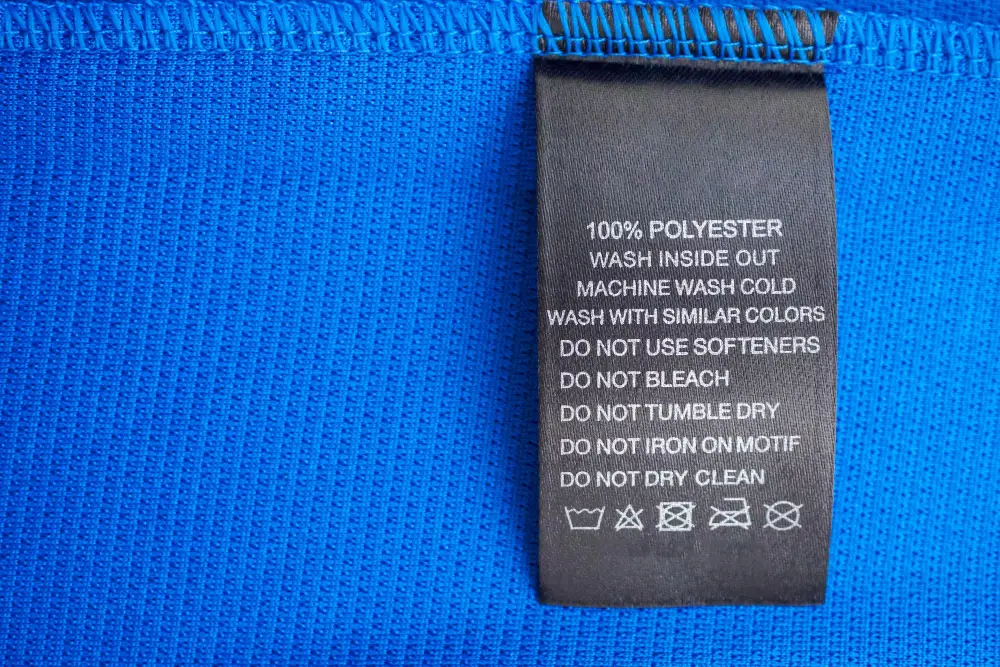
Different fabrics require different methods of cleaning and maintenance, so it’s crucial to know what you’re dealing with before attempting any kind of treatment.
Firstly, always check the manufacturer’s label on your couch. This will give you valuable information about what type of fabric is used and how best to clean it.
Some fabrics may be more delicate than others and require special attention.
Secondly, avoid using harsh chemicals or abrasive materials when cleaning your couch as this can damage the fibers in the fabric over time. Instead, opt for gentle cleaners specifically designed for upholstery use.
Lastly, regular maintenance is key in keeping your sofa looking its best. Vacuuming regularly helps remove dust and debris that can accumulate on upholstered surfaces while also preventing stains from setting in deep within fibers.
Use of Fans and Dehumidifiers

Fans can be used to increase air circulation, which helps evaporate moisture from the fabric. Place fans around the couch, pointing them towards it at different angles for maximum coverage.
Dehumidifiers work by removing excess moisture from the air, making it easier for your sofa to dry out faster.
If you don’t have a dehumidifier on hand, you can also use other household items like rice or kitty litter in an open container near your damp furniture piece as they absorb humidity effectively.
It’s important not to place any electrical appliances too close or directly onto wet upholstery as this could cause damage and even pose safety risks such as electrocution hazards.
Effective Air Circulation
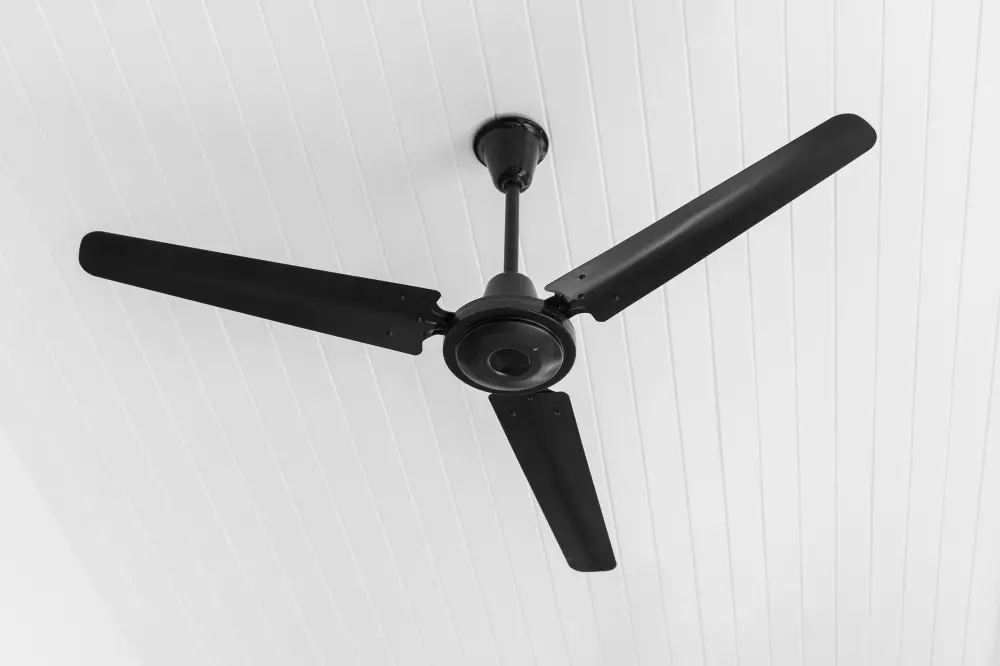
This can be achieved in several ways, depending on your available resources and preferences.
If you have ceiling fans or standing fans, turn them on high speed and direct them towards the damp areas of your couch. The moving air will help evaporate moisture from the fabric faster.
Another option is to open windows and doors in the room where your couch is located. This will allow fresh air to circulate inside, which helps reduce humidity levels that can prolong drying time.
You may also consider using a dehumidifier if you live in an area with high humidity levels or during rainy seasons when it’s difficult for natural ventilation alone to do its job effectively.
Remember that proper airflow around all sides of your sofa cushions is crucial for efficient drying. So make sure there are no obstructions blocking any part of it while allowing enough space between each cushion so they don’t touch each other as they dry out.
Exposure to Sunlight and Ventilation

This method works best on sunny days when there’s a gentle breeze blowing. Simply move your couch outside or position it near an open window where the sun can shine directly on it.
The UV rays from the sun will help kill any bacteria that may have accumulated in your damp cushions while also helping evaporate moisture trapped within them. The fresh air circulating around your sofa will also aid in drying out any remaining moisture.
However, be careful not to leave your furniture exposed for too long as prolonged exposure can cause fading or discoloration of certain fabrics. Also, avoid direct sunlight if you have leather upholstery as this could lead to cracking over time.
Open Windows

Fresh air and sunlight can help evaporate moisture from the fabric, cushions, and frame of your sofa. However, it’s important to note that this method may not work if humidity levels are high or if it’s raining outside.
To use this technique effectively:
- Open all windows in the room where your couch is located.
- Position your sofa near an open window but avoid direct sunlight as it may cause fading or discoloration.
- If possible, create a cross-breeze by opening another window on the opposite side of the room.
- Leave your couch exposed to fresh air for several hours until most of its moisture has evaporated.
Sofa Disassembly
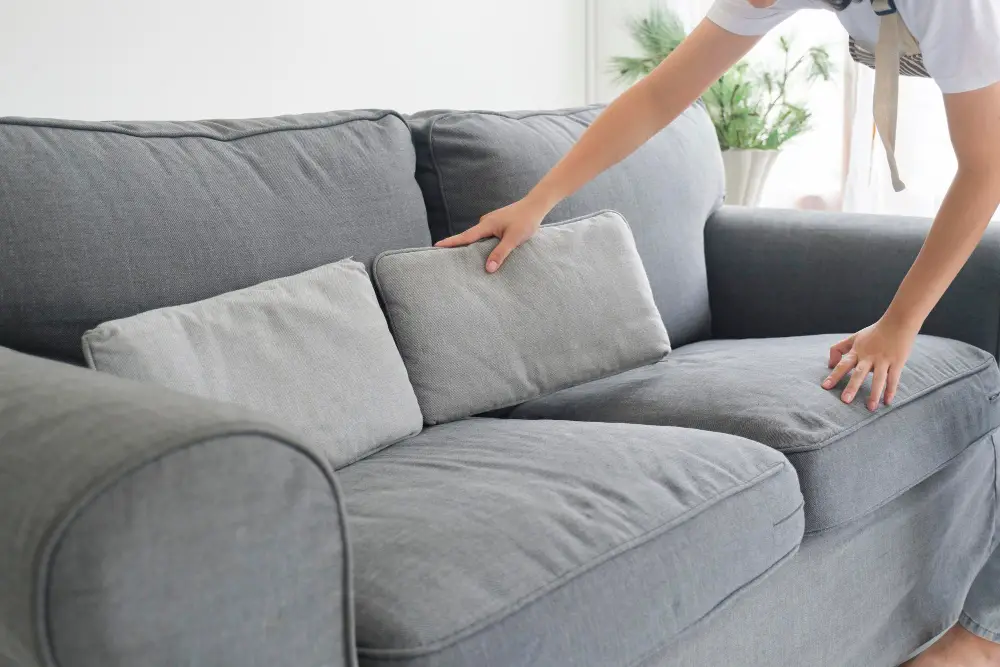
This will allow you to access the inner parts of the sofa and dry them thoroughly. Before taking apart your couch, make sure that you have a clear idea of how it was assembled in the first place so that you can put it back together correctly.
Start by removing any cushions or pillows from your sofa and set them aside. Then check for any screws or bolts holding different sections of your couch together and remove them using appropriate tools such as screwdrivers or pliers.
Once everything is taken apart, use towels to soak up excess water from each section before leaving them out in a well-ventilated area until they are completely dry. Be patient with this process as some parts may take longer than others depending on their size and material.
Moving Couch to Another Location

This can help speed up the drying process by exposing it to better air circulation and sunlight. However, before you start moving your couch around, make sure that you have assessed its weight and size.
If possible, enlist some help from friends or family members as lifting a heavy sofa on your own can lead to injury.
Once you have moved the couch into a new location with good ventilation and natural light exposure (such as near an open window), use absorbent towels or sponges again for any remaining moisture spots on cushions or covers.
Remember not to place any objects directly onto damp areas of the sofa while waiting for them dry completely; this could cause further damage such as discoloration or mold growth.
Timeframe for Couch Drying
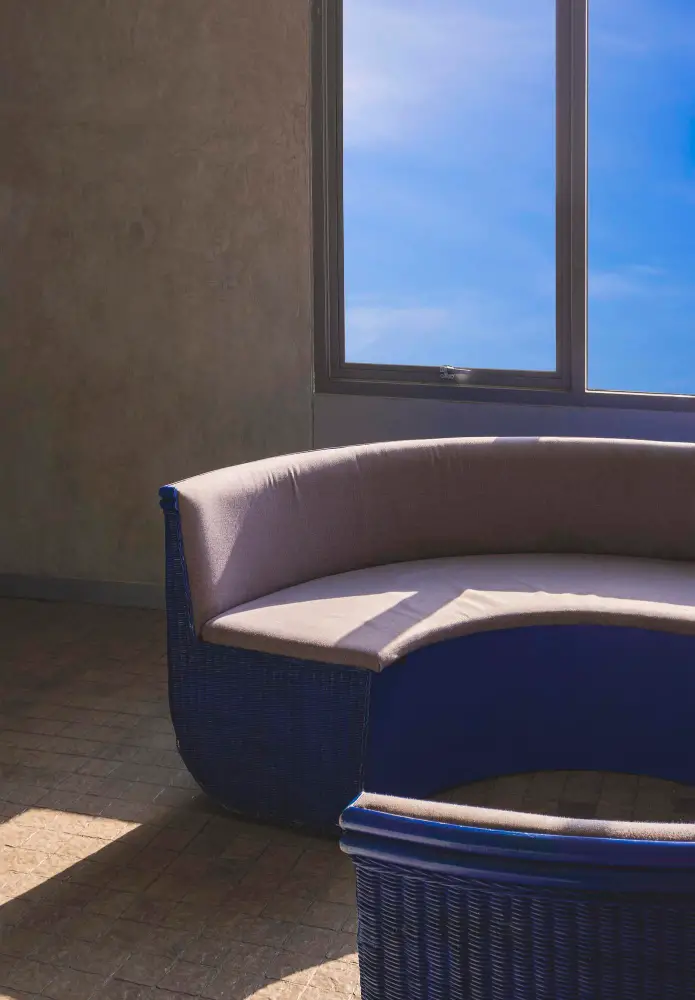
A small spill or spot can be dried within a few hours, while a fully soaked couch may take up to 24-48 hours to completely dry. The type of fabric also plays an important role in drying time; natural fibers like cotton and wool tend to absorb more water than synthetic materials such as polyester or nylon.
It’s essential not only for the appearance but also for health reasons that you ensure your sofa is thoroughly dried before using it again. Sitting on damp cushions can lead to mold growth, which poses serious health risks.
To speed up the drying process, use fans and dehumidifiers if available. Open windows and doors for proper ventilation if weather permits; this helps circulate air around the furniture piece effectively.
Preventing Mold and Mildew Growth

These fungi thrive in damp environments, so it’s essential to take steps to prevent their growth. One of the most effective ways to do this is by ensuring that your couch is completely dry before using it again.
To prevent mold and mildew from growing on your sofa, you should also consider using a dehumidifier or fan in the room where the couch is located. This will help reduce humidity levels, which can contribute to fungal growth.
Another way to prevent mold and mildew from developing on your furniture is by regularly cleaning it with an anti-fungal solution. You can find these solutions at most home improvement stores or online retailers.
Couch Maintenance
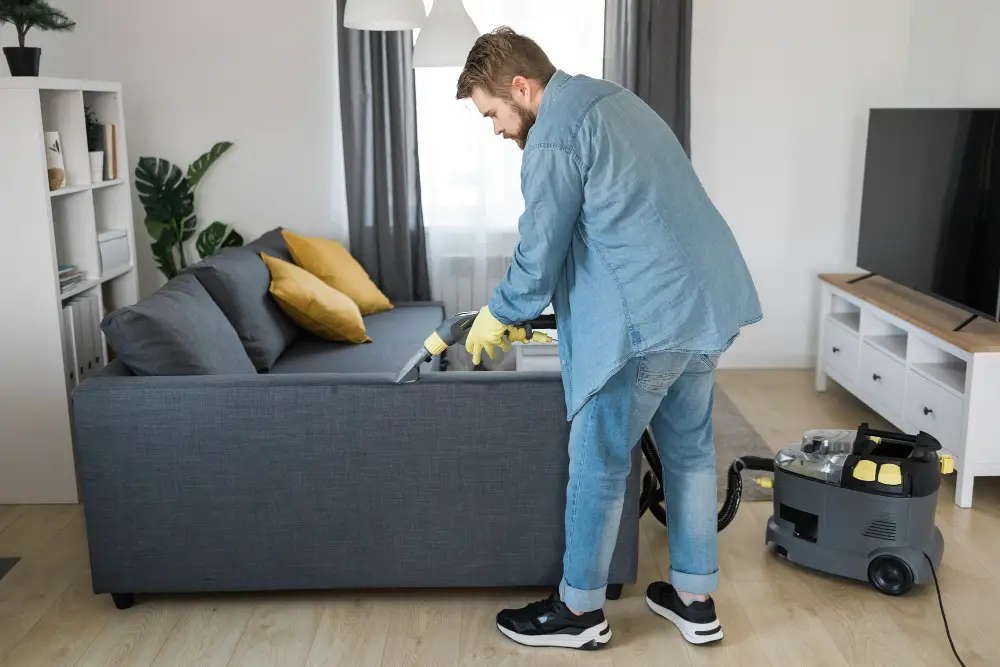
Regular maintenance can help prevent water damage and prolong the life of your sofa. Here are some tips for maintaining your couch:
– Vacuum regularly: Dust, dirt, and debris can accumulate on your couch over time. Use a vacuum cleaner with an upholstery attachment to remove any loose particles.
– Rotate cushions: To ensure even wear and tear on your cushions, rotate them every few months.
– Avoid direct sunlight: Prolonged exposure to sunlight can cause fading or discoloration of fabric or leather sofas.
– Keep pets off the furniture: Pets’ claws or fur could scratch or damage upholstery fabrics over time.
Saving a Water Damaged Couch
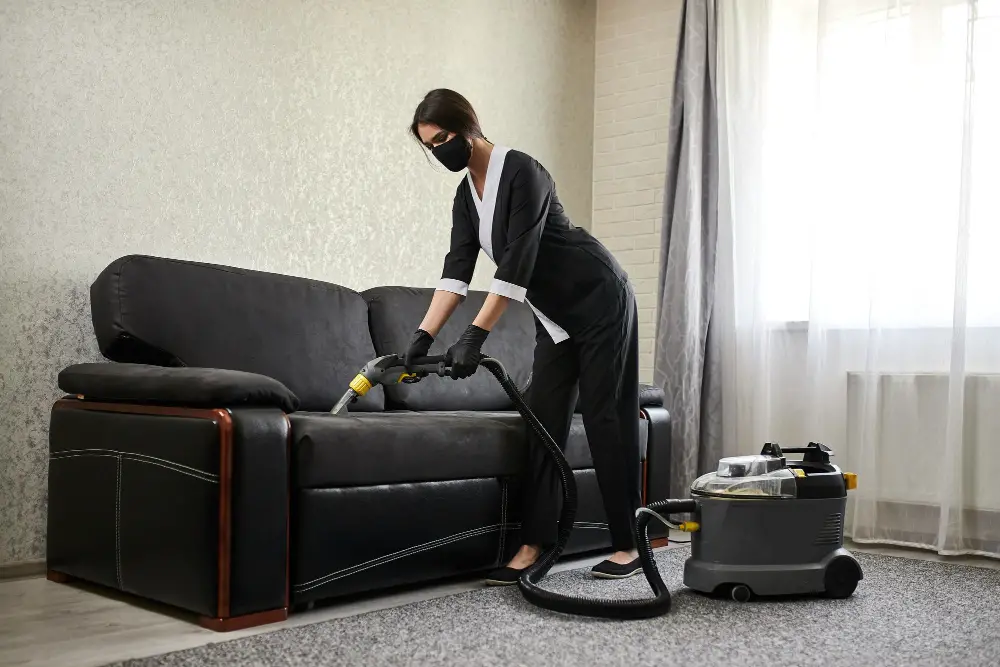
If you were unable to address the water damage promptly or if it was caused by a flood or other natural disaster, your couch may require more extensive repairs.
If your sofa has been submerged in water for an extended period of time or is showing signs of mold growth despite being dried out thoroughly, it’s best to call in a professional upholstery cleaner. They will have specialized equipment and cleaning solutions that can help salvage even severely damaged furniture.
In some cases where the damage is beyond repair, replacing the affected parts might be necessary. For instance, if only one cushion has been soaked through with water while others are still dry; consider removing and replacing just that cushion instead of buying an entirely new sofa set.
Dry Cleaning Upholstery

Dry cleaning upholstery is an effective way to remove moisture from your couch without damaging the material. Professional cleaners use specialized equipment and techniques that are safe for all types of fabrics.
When choosing a dry cleaner, make sure they have experience in handling water-damaged furniture. Ask about their methods and what type of solvents they use for cleaning.
It’s also important to check if they offer pick-up and delivery services as moving a wet couch can cause further damage.
Remember that dry cleaning can be expensive, so weigh up the cost against buying new furniture before making any decisions.
How Long for Couch to Dry After Cleaning
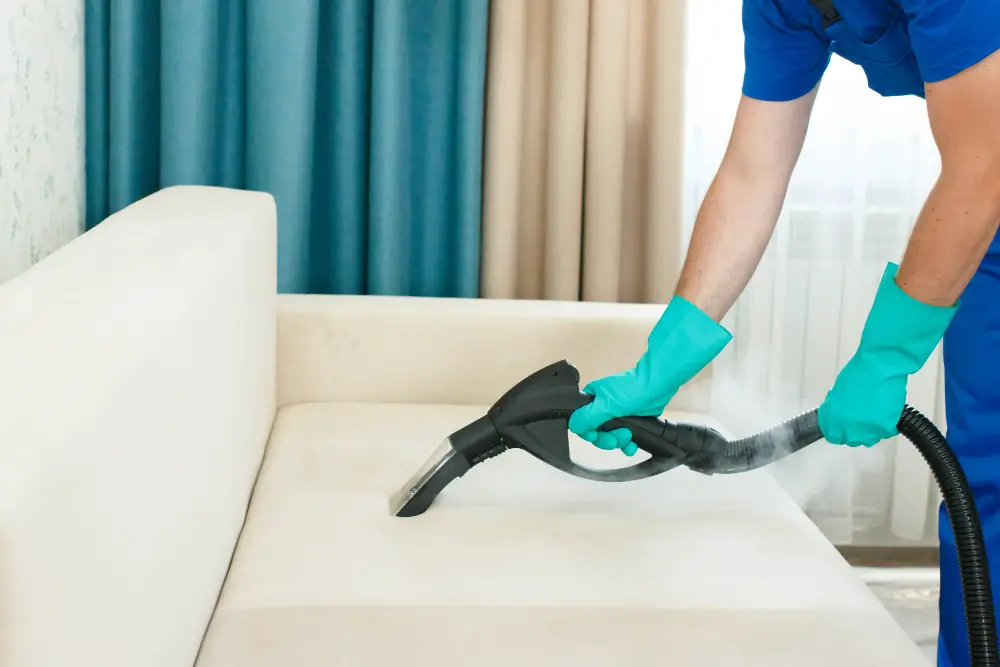
The drying time will depend on various factors such as the type of fabric, humidity levels in the room, and ventilation. Generally speaking, a couch can take anywhere from 4-12 hours to dry after cleaning.
If you’re using a steam cleaner or shampooing your sofa cushions and covers thoroughly with water-based solutions like vinegar or baking soda mixtures; expect longer drying times than when spot-cleaning with mild soap and water.
To speed up the process of drying your couch after cleaning:
- Use fans: Place fans around the wet areas of your sofa for faster air circulation.
- Open windows: If weather permits open windows for better ventilation.
- Dehumidifiers: Use dehumidifiers if you live in humid climates
- Sunlight exposure: Move furniture outside under direct sunlight (if possible) since UV rays help kill bacteria that cause odors
Remember that rushing through this process may lead to mold growth which is harmful not only for health but also damages upholstery fabrics beyond repair!
FAQ
How long does it take for a couch to dry?
It typically takes 4-6 hours for a couch to dry, but the exact time may vary depending on factors such as air circulation and humidity.
How do you absorb moisture from a couch?
To absorb moisture from a couch, place an absorbent towel between the fabric and cushion material for large wet stains, and wait until all parts are completely dry before reassembling the cushions.
How long does it take for a sofa cushion to dry?
It takes just a few hours for a sofa cushion to dry.
Can you save a wet couch?
Yes, a wet couch can be saved by allowing it to dry for a day or two, but in extreme cases, the upholstery may need to be stripped off and cleaned, or replaced if the water is highly contaminated and the couch is porous.
What are the most effective methods to speed up the drying process of a couch?
The most effective methods to speed up the drying process of a couch include using fans, opening windows, and applying heat through a hairdryer or portable heater.
How can you prevent mold growth on a wet couch during the drying process?
To prevent mold growth on a wet couch during the drying process, ensure proper ventilation and use a dehumidifier while drying the material.
Are there specific materials or types of couches that require special care when drying?
Yes, materials such as leather, suede, and certain delicate fabrics require special care when drying.




